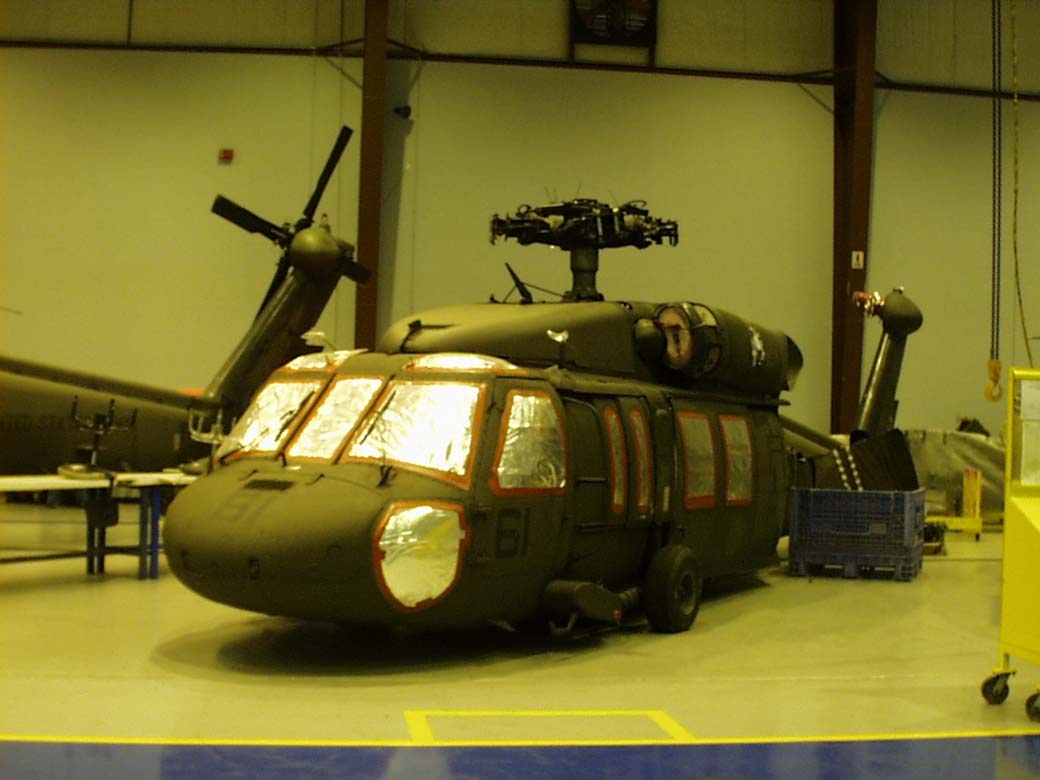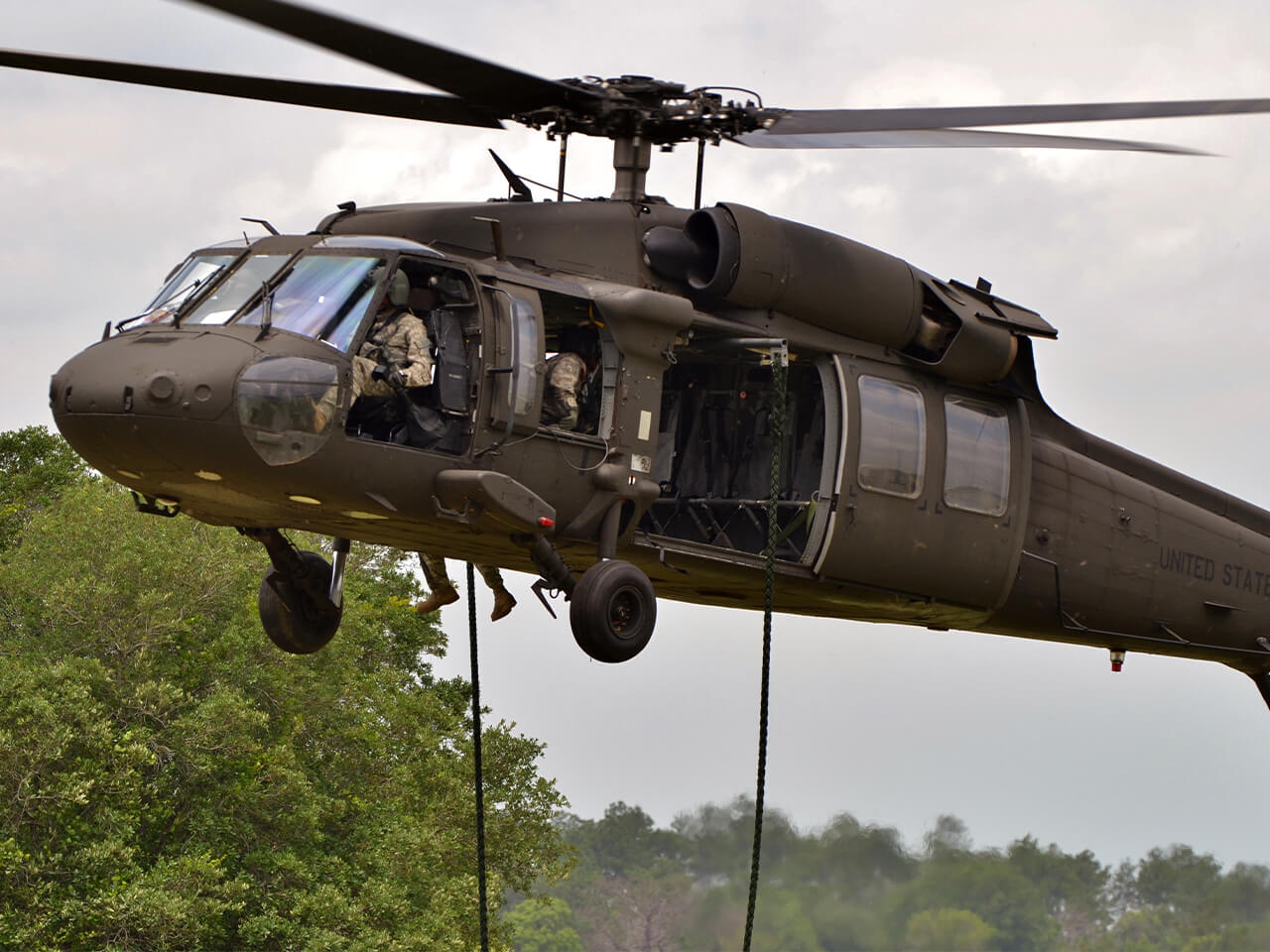Checking Out the History and Advancement of the UH 60 Helicopter

Origins of the UH-60
The origins of the UH-60 helicopter can be traced back to the late 1960s, a period marked by the requirement for a functional energy airplane that could adapt to the advancing demands of modern war. The U.S. Military acknowledged the need for a substitute for the older UH-1 Iroquois, which was becoming increasingly inadequate for the complexities of modern combat scenarios. In 1967, the Army initiated the Utility Tactical Transport Airplane System (UTTAS) program, which looked for to create a multi-role helicopter with the ability of numerous goals, consisting of army transportation, clinical discharge, and logistical assistance.
The design competition attracted several aerospace suppliers, yet it was Sikorsky Airplane Corporation that eventually protected the agreement in 1972. The UH-60 Black Hawk was presented, showcasing innovative design aspects and advanced innovation that established it in addition to its precursors. Its first flight occurred in 1974, and the aircraft was formally taken on by the Military in 1979. The UH-60 swiftly obtained recognition for its durable efficiency, dependability, and flexibility, leading the way for its extensive usage in army procedures and strengthening its condition as a cornerstone of united state Army aeronautics.
Secret Design Attributes
Innovative layout functions of the UH-60 Black Hawk dramatically contribute to its operational performance. Among one of the most significant facets is its twin-engine setup, which enhances dependability and gives a higher power-to-weight proportion, enabling the helicopter to execute under various problems. The airplane's four-blade primary blades system uses boosted lift and maneuverability, important for tactical missions.

Furthermore, the cockpit is designed for ideal visibility and ergonomics, including advanced avionics that simplify pilot operations. The modular layout of the UH-60 enables for easy upkeep and versatility, making it suitable for numerous mission accounts, from troop transportation to medevac operations. These vital style features guarantee that the UH-60 Black Hawk remains a trustworthy and versatile property in armed forces air travel, efficient in satisfying the demands of modern war.
Technological Improvements
Current technological improvements in the UH-60 Black Hawk have dramatically improved its functional capabilities and versatility. The assimilation of innovative avionics, such as electronic flight control systems and improved situational recognition displays, allows pilots to operate with raised accuracy and effectiveness. These systems facilitate improved navigation, interaction, and information sharing, enabling the helicopter to operate effectively in varied atmospheres.
In addition, the intro of composite products has actually lowered the total weight of the airplane while keeping architectural honesty. This reduction enhances fuel efficiency and extends operational variety. The incorporation of sophisticated blades innovation, consisting of making use of four-blade, totally articulated blades systems, has actually improved lift efficiency and ability to move, enabling much better handling in different flight conditions.

Moreover, improvements in propulsion systems, such as the T700-GE-701D engines, have enhanced power output and dependability - uh 60. These engines contribute visit their website to superior efficiency in high-altitude and hot-weather problems
Finally, the combination of self-defense systems and improved sensing unit bundles improves the Black Hawk's survivability and mission effectiveness. Collectively, these technical enhancements make sure that the UH-60 Black Hawk stays an important asset in modern aviation, with the ability of adjusting to the advancing needs of altruistic and army missions.
Duty in Military Procedures
As the backbone of U.S. Army air travel, the UH-60 helicopter plays a vital duty in various military operations, offering as a flexible platform for combat assistance, transportation, and medevac goals - uh 60. Its design integrates the capability to run in diverse settings, making it essential for army activity and logistical support in both standard and unique warfare

In clinical evacuation situations, the UH-60 has actually confirmed indispensable, significantly lowering the time to move injured soldiers from the battlefield to medical Check This Out centers. Its advanced avionics and evening vision abilities further make certain objective success under difficult conditions. On the whole, the UH-60 helicopter continues to be an essential property, continually adjusting to satisfy the progressing demands of military operations and boosting the performance of united state pressures worldwide.
Future of the UH-60
Looking in advance, the future of the UH-60 helicopter entails considerable improvements in technology and capabilities made to improve its functional efficiency. As army operations advance, the UH-60 is expected to integrate cutting-edge modern technologies, including boosted avionics, enhanced tools systems, and advanced communication devices. These enhancements will certainly enable better situational understanding and goal versatility, ensuring that the UH-60 continues to be an important property on the field of battle.
One noteworthy development is the assimilation see it here of fly-by-wire systems, which will boost trip control accuracy and lower pilot work. In addition, efforts to update the airframe and engines aim to increase array, speed, and payload capability, thereby broadening the helicopter's functional scope (uh 60).
The future likewise holds guarantee for enhanced interoperability with unmanned aerial systems (UAS), enabling collaborated goals that take advantage of both manned and unmanned abilities. Furthermore, the unification of fabricated knowledge and equipment understanding can maximize trip characteristics and upkeep procedures, causing minimized functional expenses.
Conclusion
The UH-60 Black Hawk helicopter represents a significant achievement in army aeronautics, progressing from the U.S. Army's initial requirements for a versatile energy airplane. Its ingenious style functions and continuous technological developments have ensured its relevance in various military procedures over the decades. As the needs of modern war modification, the future of the UH-60 will likely involve more enhancements and adaptations, enhancing its standing as a crucial asset for armed forces worldwide.
The UH-60 Black Hawk helicopter represents a substantial turning point in armed forces air travel, arising from the United state Army's quest for a more flexible and trusted utility aircraft in the late 20th century.The beginnings of the UH-60 helicopter can be mapped back to the late 1960s, a period noted by the requirement for a versatile energy airplane that could adapt to the advancing needs of contemporary war. In general, the UH-60 helicopter continues to be a crucial asset, constantly adjusting to meet the progressing demands of armed forces procedures and enhancing the efficiency of United state forces worldwide.
Looking in advance, the future of the UH-60 helicopter entails considerable improvements in technology and abilities designed to improve its operational efficiency.The UH-60 Black Hawk helicopter represents a substantial accomplishment in military aeronautics, advancing from the United state Army's initial needs for a functional energy aircraft.